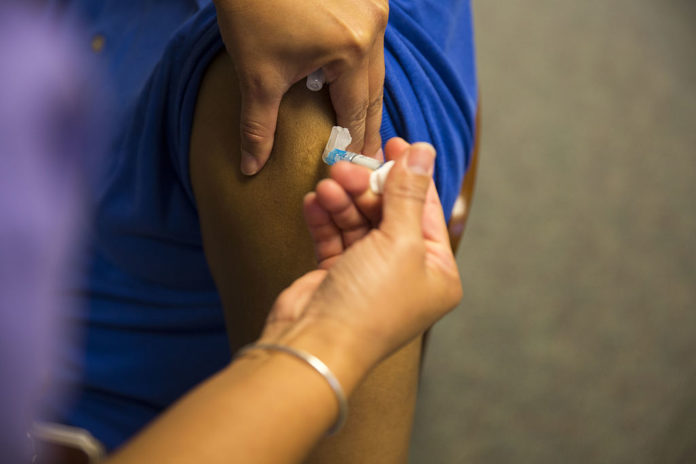The Directorate General of Health Services of the Delhi government issues swine flu advisory
As delhi reels under a particularly severe outbreak of swine flu (seasonal influenza or H1N1) – there have been more than 1000 cases in the capital so far – the directorate general of health services of the Delhi government has issued an advisory on the disease.
Seasonal Influenza ( H1N1) is a self- limiting viral, air borne disease spread from person-to-person, through large droplets generated by the act of coughing and sneezing, indirect contact by touching a contaminated object or surface (fomite transmission like telephone, cell phones, computers, door handles, door bells, pens, toys etc) and close contact (including hand shaking, hugging, kissing )
Symptoms: Fever & Cough, Sore throat, Runny or Stuffy Nose, Difficulty in Breathing. Other symptoms may include Body Aches, Headache, Fatigue, Chills, Diarrhea and Vomiting and Blood Stained Sputum
Category- A
- Mild fever plus cough / sore throat with or without bodyache, headache, diarrhoea and vomiting
- No Oseltamivir and no testing is required for category- A patients
- Symptomatic treatment and the patients should be monitored for their progress and reassessed at 24 to 48 hours by the doctor.
- Patients should confine themselves at home and avoid mixing up with public and high risk members in the family.
Category-B
- (i) In addition to all the signs and symptoms mentioned under Category-A, if the patient has high grade fever and severe sore throat, may require home isolation and Oseltamivir.
- (ii) In addition to all the signs and symptoms mentioned under Category-A, individuals having one or more of the high risk conditions shall be treated with Oseltamivir.
- No test for Influenza is required for Category-B (i) and (ii) patients
- All patients of Category-B (i) and (ii) should confine themselves at home and avoid mixing with public and high risk members in the family.
- Broad Spectrum antibiotics as per the Guideline for Community-acquired pneumonia (CAP) may be prescribed.
- High Risk Group :Children with mild illness but with predisposing risk factors, Pregnant women, Persons aged 65 years or older, Patients with lung diseases, heart disease, liver disease, kidney disease, blood disorders, diabetes, neurological disorders, cancer and HIV/AIDS, Patients on long term cortisone therapy.
Category-C
- In addition to the signs and symptoms of Category-A and B, if the patient has one or more of the following danger signs
- Breathlessness, chest pain, drowsiness, fall in blood pressure, sputum mixed with blood, bluish discolouration of nails.
- Children with influenza like illness who had a severe disease as manifested by the red flag signs (Somnolence, high and persistent fever, inability to feed well, convulsions, shortness of breath, difficulty in breathing, etc).
- Worsening of underlying chronic conditions.
- All these patients mentioned above in Category-C require testing, immediate hospitalization and treatment.
| DO’s | DON’Ts |
|
|


